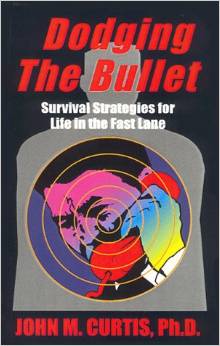Proving that anything goes with criminal defense attorneys since the OJ Trial, defense attorneys for George Floyd’s killer-cop Derek Chauvin asked that the murder charges be tossed out. Reviewing the coroner’s autopsy report, Chauvin’s defense attorney Eric Nelson, of Halberg’s Criminal Defense Firm, insists that Floyd died of a combination of drug-induced trauma and natural death but not, as Hennepin County prosecutor contends, murder by suffocation. A viral video showed 44-year-old Chauvin leaning his knee-and-body- weight on Floyd’s neck for nearly nine minutes before pronounced death by Hennepin County paramedics. Give Nelson credit for coming up with plausible deniability in Chauvin’s defense, claiming that drugs, sickle sell anemia and heart problems cause Floyd’s death. Hennepin County District Judge Peter A. Cahill weighed Nelson’s argument.
Chauvin and his three colleagues, 26-year-old J. Alexander Kueng, 37-year-old Thomas Lane and 34-tear-old Tou Thao, were all charged with second-degree murder for their passive role in Floyd’s death. Hennepin County Prosecutor Mike Freeman contends that Chauivin acted with flagrant disregard of Floyd’s life, suffocating him with a nine-minute-long chokehold, resulting in his death. “Despite Floyd’s pleas that he could not breathe and was going to die, as well as the pleas of eyewitnesses to get off Mr. Floyd and help him, Defendant [Chauvin] and his co-defendants continue to restrain Mr. Floyd,” wrote Freeman. Freeman charged Chauvin with second-degree murder, third-degree murder and manslaughter. Kueng, Lane and Thao were charged with aiding-and-abetting both second-degree murder and manslaughter, all four were fired.
Mounting a rigorous defense, Nelson blamed Floyd’s death on a lethal dose of fentanyl, speedball [methamphetamine], and a host of medical problems suffered by Floyd, including sickle cell anemia and heart problems. Chauvin faces a minimum of 12.5 years but Judge Cahill could add more time to the sentence, up to 15 years. Kueng, Lane and Thao could face up to four years for second-degree manslaughter. Nelson hopes the coroner’s toxicology and medical report provides exculpatory evidence, proving that Chauvin didn’t mean to kill Floyd. Freeman didn’t charge Chauvin with First-degree-murder that involves intent to kill but rather accidentally killed Floyd because of Floyd’s drug overdose and medical conditions. While it all sounds good, only expert witnesses can present Nelson’s theory to a jury. Viewing the viral video of Floyd’s death made Chauvin look guilty of at least second-degree murder.
Rioting took place in Minneapolis for several nights before Freeman filed charges against Chauvin and the three other officers. Whatever happened May 25, it’s clear that had Chauvin not leaned on Floyd’s neck with his knee-and-body-weight for nearly nine minutes Floyd would be alive today. Raising the toxicology and autopsy reports offers Chauvin and his colleagues some hope for a mitigated sentence. Whether or not a jury buys Nelson’s defense is anyone’s guess. Freeman can clearly show that Chauvin’s illegal use of a chokehold was not acceptable police procedure, proving that Floyd’s murder was no accidental or due largely to drugs or his medical condition. When it comes to wrongful death, a plaintiff’s pre-existing medial condition is not relevant when it comes to injuries. Even if Floyd’s drug use or medical conditions contributed to his death, Chauvin can still be held responsible.
Taking personal injury law as an example: If a plaintiff had a bad back prior to a rear-end collision, the preexisting medical condition cannot be used to mitigate the defendant’s liability. Plaintiffs in civil actions or defendants in criminal case are taken as they are, before an incident took place. Any attempt to mitigate Chauvin’s culpability is bound to fail with a competent jury. Just like in the Aug. 23 Jacob Blake shooting, it’s not exculpatory evidence that Blake possessed a knife in his car, before Rustan Sheskey shot him seven times in the back. Floyd’s drug abuse or past criminal record had nothing to do with what Chauvin did when he kneeled on his neck. “Put simply, Mr. Floyd could not breathe because had ingested a lethal dose of fentanyl, possibly a speedball,” Nelson told Judge Cahill, asking that murder charges be dropped. Nelson hoped for the best but isn’t likely to get the charges dropped.
When Freeman came back with second-degree charges June 3, the Hennepin County DA was more confident about a conviction beyond a reasonable doubt. Raising Floyd’s preexisting medical condition or his toxicology state does not change what Chauvin did, kneeling for nearly nine minutes on Floyd’s neck. Jurors will have to decide whether Chauvin’s drug use or medical problems contributed to his death. If it’s anything like most wrongful death suits, a criminal jury will still return second-degree murder convictions on Chauvin. “Combined with sickle cell train, his pre-existing heart conditions, Mr. Floyd’s use of fentanyl and methamphetamine most likely killed him,” Nelson said assuming facts not in evidence.” Only a jury can determine by expert testimony whether or not Floyd’s drug use or medical conditions might have contribute to his May 25 death.



